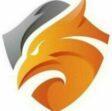So, you’ve found a 3D printer with a price tag that looks great. Before you click “buy,” it’s important to understand that the printer itself is just the starting line. Like buying a regular paper printer, the initial hardware cost is one thing, but the ink and paper are what you’ll buy over and over.
In 3D printing, your “ink and paper” are filament, tools, and replacement parts. Understanding these additional costs upfront will save you from surprises and help you create a realistic budget. Let’s break down what you’ll actually need to spend money on beyond the machine.
1. Filament: The “Ink” of Your 3D Printer
Filament is the plastic material you print with, and it will be your most significant recurring cost. It comes in spools, typically 1 kilogram (2.2 lbs).
- Standard Filaments (PLA, PETG): This is your everyday workhorse material. Perfect for beginners and most hobbyist projects.
- Budget: $20 – $30 per 1kg spool.
- Pro Tip: Plan on buying at least two or three spools to start. You’ll want different colors and a backup for when one runs out mid-print.
- Specialty Filaments (TPU, ABS, Wood-fill, Carbon Fiber): These materials offer unique properties like flexibility, heat resistance, or a different look, but they come at a higher price and can be more challenging to print with.
- Budget: $30 – $60+ per 1kg spool.
Starting Budget for Filament: $50 – $75
2. Essential Tools and Accessories
Your printer may come with a few basic tools, but you’ll want to assemble a dedicated toolkit for a smoother experience.
- Digital Calipers: Non-negotiable. You need these to accurately measure parts, check filament diameter, and calibrate your printer. Cost: $20 – $35.
- Flush Cutters: For cleanly snipping filament and trimming supports off finished prints. Cost: $5 – $10.
- Metal Scraper or Putty Knife: Essential for safely removing stubborn prints from the build plate. Cost: $5 – $15.
- Isopropyl Alcohol (IPA) 90%+: The best way to clean your print bed for perfect first layers. Cost: $10 – $15 a bottle.
- Filament Storage: Filament absorbs moisture from the air, which ruins print quality. At a minimum, you need airtight containers with desiccant packs. A dedicated filament dryer is an even better investment. Cost: $15 (bags) to $50 (dryer).
Starting Budget for Tools: $55 – $125
3. Maintenance and Spare Parts
Just like a car, a 3D printer has parts that wear out over time. Budgeting a small amount for these consumables will keep you from getting stuck.
- Nozzles: These are cheap and easy to replace. Brass nozzles wear down, especially with abrasive filaments. It’s smart to have a pack of spares on hand. Cost: $10 – $20 for a multi-pack.
- Build Surfaces (PEI Sheets, Glass Beds): The surface you print on can get damaged by scraping or failed prints. A replacement is often needed every year or so, depending on use. Cost: $20 – $50.
- PTFE Tubing: The tube that guides the filament in many printers can degrade over time and will need to be replaced. Cost: $10 – $15.
Annual Budget for Maintenance: $40 – $85
4. Post-Processing Supplies
This is how you take your prints from looking “3D printed” to looking like a finished product.
- Deburring Tool: Quickly removes the small imperfections and sharp edges. Cost: $10 – $15.
- Sandpaper: A variety pack of different grits is essential for smoothing layer lines. Cost: $10.
- Primer, Paint, and Adhesives: If you plan to finish your models, you’ll need spray primer, acrylic paints, and super glue (CA glue) or epoxy for multi-part assemblies. Cost: Varies based on project needs.
Your Realistic First-Year Budget
Let’s put it all together.
| Item | Estimated Cost |
| 3D Printer | (Your Printer’s Price) |
| Initial Filament (3 spools) | $75 |
| Essential Tools & Storage | $70 |
| First-Year Maintenance Fund | $40 |
| Total Cost Beyond the Machine: | ~$185 |
So, when you’re looking at that $300 printer, a more realistic budget to get you started and keep you running for the first year is closer to $485. Planning for these costs ensures your new hobby is rewarding, not frustrating.

